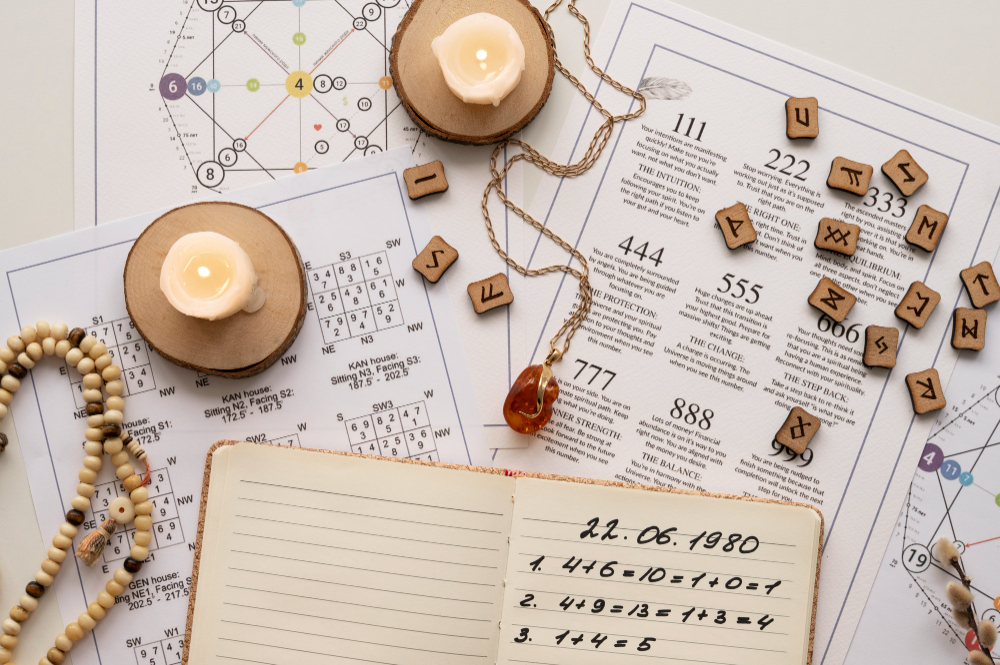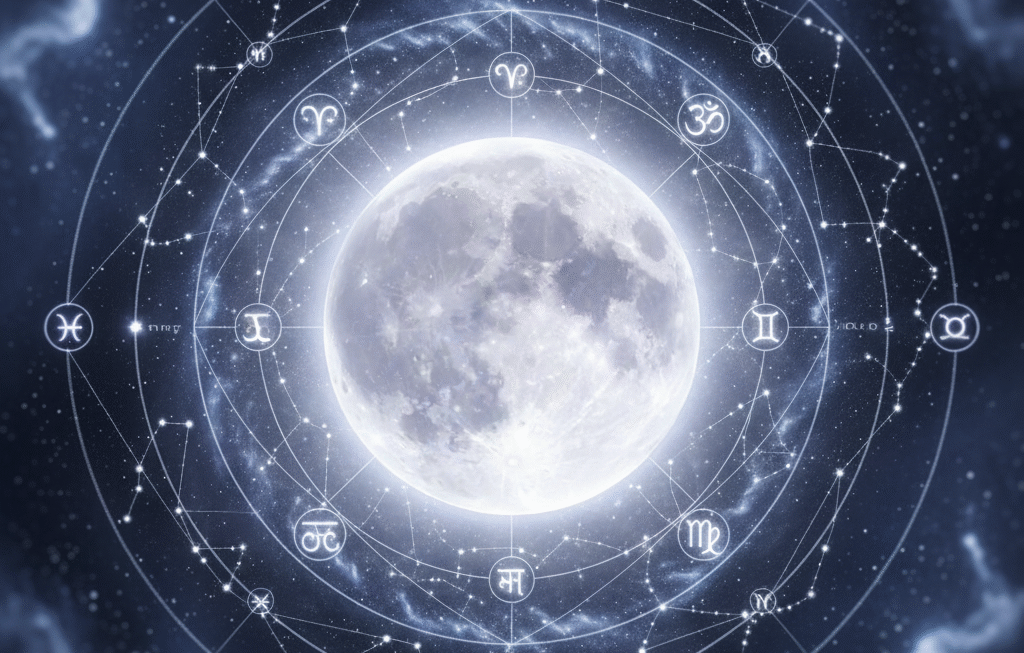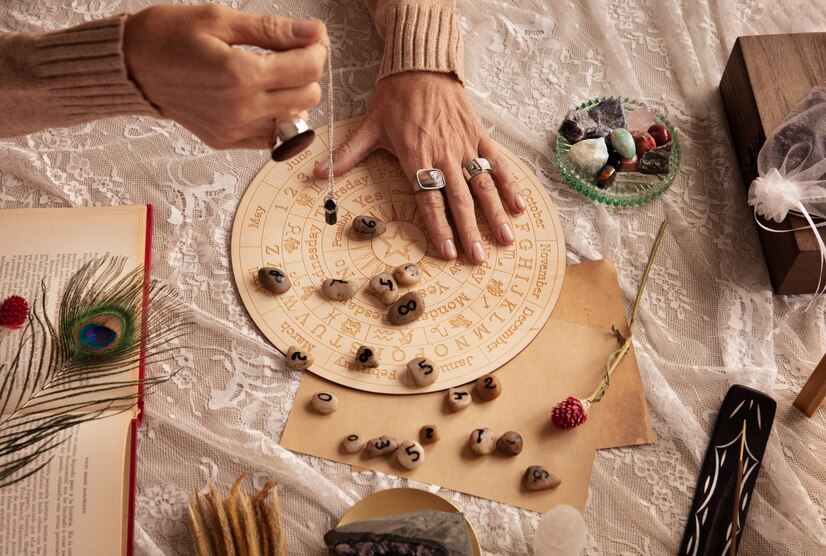Namaste and welcome! Our council convenes today to unlock one of the most remarkable and unique predictive tools of Jyotish (Vedic Astrology): the Dasha Systems. These are systems of Planetary Periods that indicate when the karmic potentials shown in the natal chart (Kundali) are likely to fructify. Unlike Western predictive methods often focused on transits, Dashas provide a fundamental timeline for life events. We will primarily focus on Vimshottari Dasha Explained, the most widely used system, understanding Mahadasha Antardasha Meaning and how Dashas reveal the Timing of Karma.
The Participants:
- Rishi Parashara: A Traditional Jyotishi, expert in Dasha calculation and classical interpretation.
- Jyotishi Kala: A Contemporary Jyotishi, applying Dasha insights to modern life cycles.
- Abhyasi Student: A Diligent Student, learning the intricacies of Dasha calculation and interpretation.
- Margadarshi Advisor: A Practical Application Expert, using Dashas for precise prediction and guidance.
- Moderator: Guiding our exploration of these timing systems.
Round 1: Understanding Dasha Systems – The Concept
Moderator: Let’s begin with the foundation. Rishi Parashara, what are Dasha systems, and why are they central to Jyotish prediction?
Rishi Parashara: Dasha systems are the cornerstone of Jyotish predictive timing. ‘Dasha’ implies a ‘state’ or ‘period’ of life governed by a particular Graha (planet). Based on specific conditions at birth (primarily the Moon’s Nakshatra position for Vimshottari), these systems allocate specific time periods to each of the nine Grahas in a fixed sequence. During a Graha’s Dasha, the results indicated by that Graha’s natal condition (strength, placement, lordship, aspects) come to the forefront. Maharishi Parashara described numerous Dasha systems, but Vimshottari Dasha, spanning 120 years, is the most universally applicable and widely used (Udu Dasha category). They reveal the Timing of Karma.
Jyotishi Kala: Exactly. Think of the natal chart as the ‘promise’ of karma, and the Dasha system as the ‘timing’ of when those promises (both positive and negative) are delivered. Vimshottari divides life into major periods called Mahadashas, ruled by one Graha (e.g., Venus Mahadasha lasts 20 years, Saturn Mahadasha 19 years). Each Mahadasha is further subdivided into sub-periods called Antardashas (or Bhuktis), ruled by each of the nine Grahas in sequence within the Mahadasha. This provides a multi-layered timing mechanism.
Abhyasi Student: This sounds incredibly precise! Calculating the starting point based on the Moon’s exact degree in its birth Nakshatra (Janma Nakshatra) seems critical. And then understanding how the Mahadasha lord and the Antardasha lord interact to produce results must be complex. How do you balance their influences, especially if one is strong natally and the other is weak?
Margadarshi Advisor: It requires careful synthesis, Abhyasi. The Mahadasha lord sets the overarching theme and tone for its entire period. The Antardasha lord modifies this, bringing its own natal indications to the forefront within that larger theme. For example, in a strong Jupiter Mahadasha (promising growth, wisdom), an Antardasha of a weak, afflicted Saturn might bring periods of delay, obstacles, or responsibility within that overall Jupiterian theme. We analyze:
- The natal condition of the Mahadasha lord (MDL).
- The natal condition of the Antardasha lord (ADL).
- The relationship between the MDL and ADL in the natal chart (friends/enemies, positions relative to each other).
- The houses ruled by MDL and ADL.
- Transits (Gochar) occurring during that specific Dasha/Antardasha period. This Planetary Periods Astrology is key for practical prediction.
Rishi Parashara: The interpretation principle is: the Dasha lord gives results according to its nature, strength, lordship, placement, and associations in the natal chart. A strong, well-placed Dasha lord generally gives favourable results related to its significations and the houses it rules. An afflicted lord brings challenges related to those areas. The Mahadasha Antardasha Meaning must always refer back to the natal promise.
Jyotishi Kala: And the sub-sub periods (Pratyantardashas) provide even finer timing, often pinpointing events within a few months. It’s like zooming in on the timeline, allowing for remarkably specific insights into the Unfolding of Life Events.
Perspective Intersection: Traditional Jyotish establishes Dashas as the primary method for timing karmic results based on natal placements (Parashara), contemporary practice applies this to life cycles and psychological phases (Kala), students grapple with calculation and synthesis (Abhyasi), and practical application uses Dasha analysis for precise prediction and guidance (Margadarshi).
Round 2: Common Misconceptions vs. Reality about Dashas
Moderator: Let’s clarify common misunderstandings. Jyotishi Kala?
Jyotishi Kala: A major misconception is thinking a Dasha lord guarantees results solely based on its natural quality (e.g., Jupiter Dasha always brings luck, Saturn Dasha always brings misery). The natal condition of the Dasha lord is paramount. A severely afflicted natal Jupiter can bring significant problems during its Dasha, while a strong natal Saturn (e.g., forming Shasha Yoga) can bring immense success and authority during its Dasha, albeit through hard work. Never judge a Dasha solely by the planet’s generic nature.
Margadarshi Advisor: Another is attributing everything happening in life solely to the current Dasha/Antardasha. While Dashas set the primary timing and themes, transits (Gochar) act as triggers, activating the Dasha promise. Major life events often occur when both the Dasha lords and relevant transiting planets align favorably or unfavorably with natal positions. It’s a Dasha-Transit synergy. Understanding Timing of Karma requires both.
Rishi Parashara: From tradition, neglecting other Dasha systems applicable in specific chart conditions (like Yogini Dasha or Chara Dasha for certain purposes) can be an oversight, though Vimshottari remains the foundation. Also, applying Dasha interpretations without considering the Vargas (divisional charts) – especially the Navamsa strength of the Dasha lords – can lead to inaccurate assessments of the period’s quality.
Abhyasi Student: I used to think the sequence was random! Learning that the Vimshottari sequence always follows a specific order (starting from the lord of the Janma Nakshatra: Ketu, Venus, Sun, Moon, Mars, Rahu, Jupiter, Saturn, Mercury) and cycles through 120 years was fundamental. And realizing the length of each Mahadasha varies significantly (e.g., Ketu 7 years, Venus 20 years) is also key to understanding the life map.
Hidden Wisdom: Dasha Sandhi: The transition period between the end of one Mahadasha and the beginning of the next is often considered a vulnerable or unstable time, potentially bringing significant changes or challenges as the planetary energies shift. Special attention is paid to this junction.
Round 3: Historical Evolution & Future Directions
Moderator: How did Dasha systems originate? Rishi Parashara?
Rishi Parashara: Dasha systems are unique to Jyotish and considered divinely revealed knowledge, elaborated upon by sages like Parashara and Jaimini. Vimshottari Dasha, linked to the Nakshatras, is believed to be exceptionally ancient, reflecting a deep understanding of cosmic cycles influencing human life. Different Dashas were likely developed or emphasized by various schools for specific applications (e.g., Rashi-based Dashas like Chara Dasha in the Jaimini system). The mathematical precision involved implies advanced astronomical knowledge.
Jyotishi Kala: While the core systems remain unchanged, contemporary Jyotish explores the psychological impact of Dasha periods – how our focus, motivations, and challenges shift according to the ruling planet’s energy. For example, a Rahu Mahadasha might correlate with periods of intense ambition, experimentation, or dealing with illusions; a Ketu Mahadasha with introspection, detachment, or spiritual seeking. The Unfolding of Life Events is seen through a psycho-spiritual lens.
Margadarshi Advisor: Practical applications have been greatly enhanced by software, allowing instant calculation of Mahadashas, Antardashas, Pratyantardashas, and even finer subdivisions, facilitating highly detailed timing analysis. Research continues into the nuances of Dasha lord interactions and the correlation between Dashas and specific types of events (e.g., marriage timing often linked to Dashas of 7th lord, Venus, Jupiter).
Abhyasi Student: For learners, the availability of Dasha calculators is invaluable. The challenge remains interpretive skill – learning to synthesize the natal promise with the specific timings indicated by the complex layering of Dasha lords. Clear tutorials explaining step-by-step Dasha interpretation are highly sought after.
Critical Considerations: Dasha interpretation requires a strong foundation in natal chart analysis. Predicting events solely based on Dashas without considering the natal chart’s potential or relevant transits is unreliable. Accuracy of birth time is critical, as it determines the Moon’s Nakshatra position and thus the entire Dasha sequence starting point.
Closing Reflections: Integrating Wisdom – The Clockwork of Karma
Moderator: How should our audience best approach understanding Dasha systems?
Margadarshi Advisor: Recognize Dashas as the primary Jyotish tool for timing life events and understanding life phases. Get your Dasha sequence calculated accurately. Pay attention to the Mahadasha and Antardasha lords currently active. Analyze their condition in your natal chart to understand the themes and potential quality (positive/challenging) of the current period. Use this Planetary Periods Astrology for informed planning and navigation.
Abhyasi Student: Be patient and systematic. Learn the Vimshottari sequence and durations. Focus on understanding the natal condition of each planet before trying to interpret its Dasha period. Practice analyzing the interplay between the Mahadasha lord and Antardasha lord.
Jyotishi Kala: View your Dasha periods as chapters in your life story, each bringing different themes, lessons, and opportunities based on the ruling planet’s energy and natal promise. Use this awareness for psychological growth and understanding the shifting tides of your focus and motivation.
Rishi Parashara: Respect the Dasha systems as the divine clockwork revealing the Timing of Karma. Study the classical principles of interpretation. Always correlate Dasha indications with the natal chart’s potential and confirm with transits (Gochar). Use this knowledge not just for prediction, but for aligning your actions (Kriyamana Karma) with the unfolding Prarabdha Karma. Mastering Vimshottari Dasha Explained is key to unlocking Jyotish’s predictive power.
Moderator: Thank you, council. The Dasha systems are a profound gift of Jyotish, offering unparalleled insight into the timing and unfolding of our karmic journey. By understanding the principles of Mahadashas, Antardashas, and their connection to the natal chart, we gain a powerful map for navigating life’s phases with awareness and foresight.
Further Learning
- The Concept of Karma in Vedic Astrology (Dashas time the Karma)
- Understanding Nakshatras (Lunar Mansions) (Basis for Vimshottari Dasha)
- Introduction to Grahas (The 9 Planets) in Vedic Astrology (Understanding the Dasha Lords)
- Introduction to Transits (Gochar) in Vedic Astrology (Used in conjunction with Dashas)
- Detailed analysis of each Graha’s Dasha period (e.g., Saturn Dasha effects)












